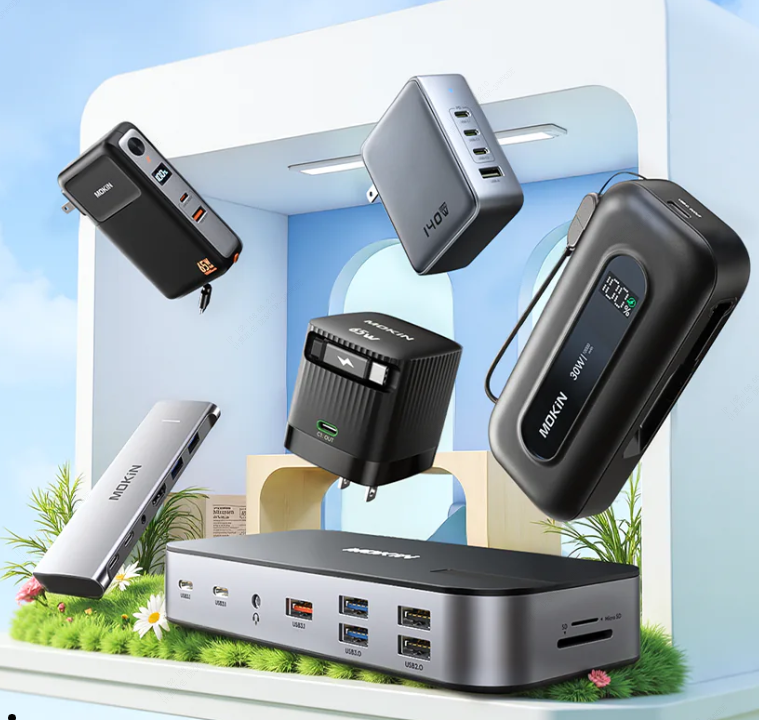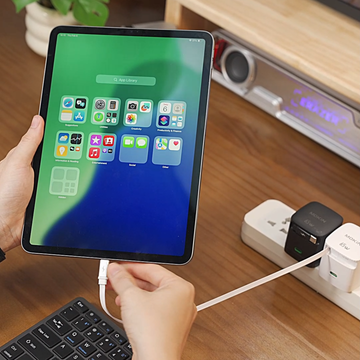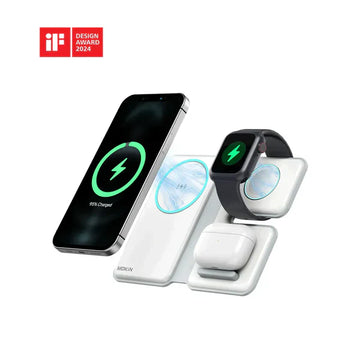How to Choose the Right Charger in 2025: USB-C, GaN, and Wireless Charging Explained
Contents
Meta Description: "Discover how to pick the perfect charger for your iPhone, Android, laptop, and more. Compare USB-C vs. GaN tech, avoid counterfeit risks, and learn pro tips for fast, safe charging in 2025."
1. Know Your Device’s Power Requirements
Before buying a charger, check your device’s voltage (V), current (A), and wattage (W). These specs are usually printed on the original charger or in the manual:
Smartphones: Most need 18W–30W (e.g., iPhone 15 supports 20W–27W via USB-C PD).
Laptops: Require 45W–100W (MacBook Air needs 30W, while gaming laptops may demand 240W).
Tablets/Wearables: Typically 5W–18W.
⚠️ Pro Tip: Mismatched wattage can slow charging or damage devices. For example, using a 5W iPhone charger on a MacBook Air will barely charge it.
2. USB-C vs. USB-A: Why the Port Type Matters
USB-C Chargers (The Future-Proof Choice):
Supports Power Delivery (PD) for fast charging (e.g., 50% in 30 mins for iPhones).
Reversible design, works with modern laptops, phones, and even Nintendo Switch.
2025 Trend: Apple’s shift to USB-C (iPhone 15, iPads) makes this a must-have.
USB-A Chargers (Legacy Devices Only):
Slower, incompatible with PD fast charging.
Best for older gadgets like Bluetooth speakers or budget Android phones.
3. GaN Chargers: Compact Powerhouses
Gallium Nitride (GaN) technology allows smaller, cooler, and more efficient chargers.
65W GaN Chargers: Charge a laptop + phone simultaneously (e.g., Anker Nano II).
100W+ GaN Chargers: Ideal for gaming laptops or creators (e.g., Satechi 108W).
Why Choose GaN?: 40% smaller than traditional chargers, with better heat management.
4. Wireless Charging: Convenience vs. Speed
Qi-Certified Wireless Chargers (7.5W–15W):
iPhone 12–15 series: Supports 15W MagSafe charging.
Samsung Galaxy S23+/Ultra: 15W fast wireless charging.
Limitation: Wireless charging is 20–30% slower than wired and generates more heat.
Multi-Device Pads:
Charge phone + earbuds + smartwatch at once (e.g., Belkin 3-in-1 MagSafe Charger).
5. Safety First: Avoid Counterfeit Chargers
Counterfeit chargers cause 30% of device fires, according to UL Safety Commission.
Key Safety Checks:
Look for UL/CE/FCC Certification Marks (usually near the plug).
Avoid overly lightweight chargers—quality components add weight.
Buy from authorized sellers (e.g., Apple Store, Amazon “Sold by Brand” listings).
6. Smart Features for Power Users
Multi-Port Chargers: Anker 735 Charger (Nano II 65W) has 2 USB-C + 1 USB-A ports.
Travel Chargers: Foldable plugs + 100–240V voltage range (e.g., Zendure SuperTank).
Eco-Friendly Picks: Brands like Nimble use recycled materials and offer lifetime warranties.
7. Future-Proof Your Purchase
USB-C PD 3.1: Supports up to 240W (future-proof for high-end laptops).
Adjustable Voltage: Some chargers (e.g., Baseus 140W) auto-adjust voltage for different devices.
FAQ Section
Q: Do new iPhones include a charger?
A: No. Since iPhone 12, Apple removed chargers to reduce e-waste. Use a 20W+ USB-C PD charger.
Q: Can I use a MacBook charger for my iPhone?
A: Yes! USB-C PD chargers are cross-compatible. A 96W MacBook Pro charger safely charges an iPhone at 20W.
Q: How to spot a fake charger?
A: Check packaging typos, missing certification logos, and unusually low prices (e.g., $5 “Apple 20W Charger”).
Final Checklist Before Buying
✅ Match wattage to your device’s needs.
✅ Prioritize USB-C PD + GaN for speed and portability.
✅ Verify safety certifications (UL/CE/FCC).
✅ Read reviews on overheating or durability issues.

MOKiN 13-IN-1 USB-C Laptop Charging Station with 2.26-inch LCD Smart Display








